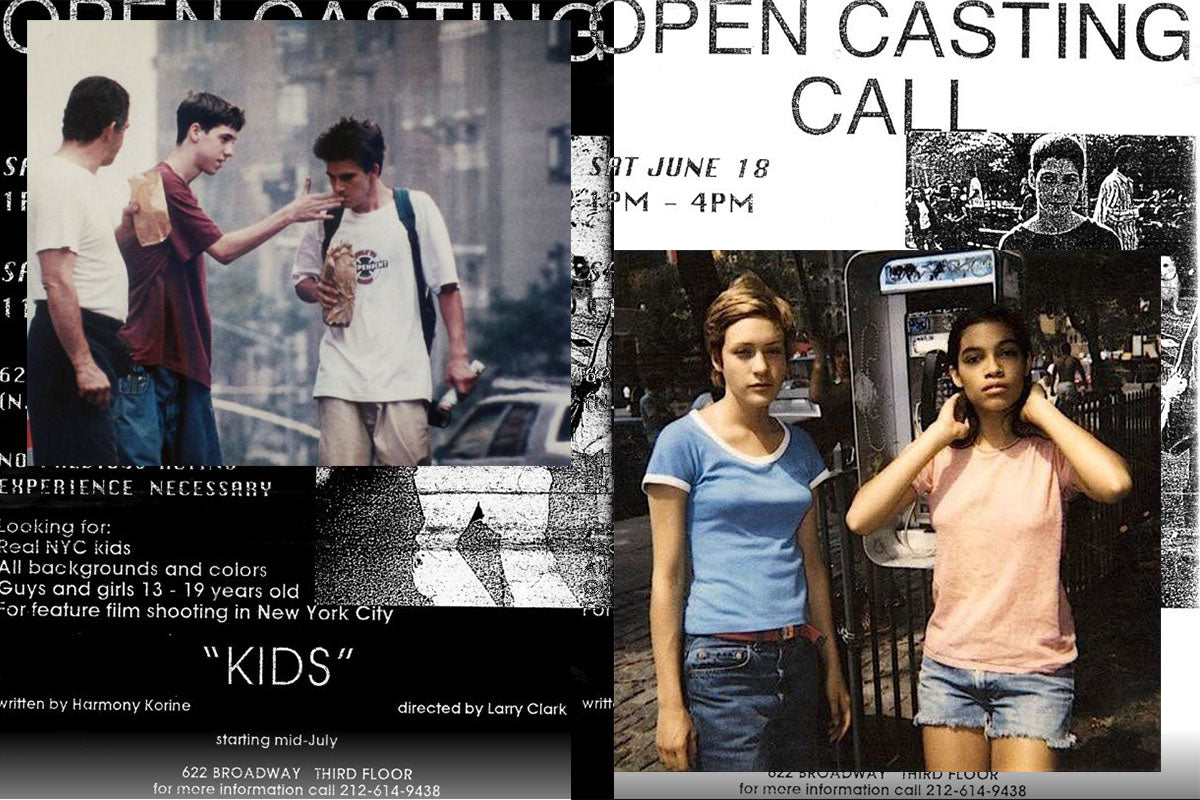
Larry Clark’s Kids: An Accidental Cult Fashion Film
In Larry Clark’s 1995 film Kids, self-proclaimed virgin surgeon Telly (Leo Fitzpatrick) cares about just one thing: having sex with girls. His uniform for sex with girls is as basic as his desire: jeans and a t-shirt, both baggy.
At its core, Kids is about the intersection of sex, rebellion and youth. It’s not an under-documented phenomenon, but no film has captured the rawness of youth so enduringly as this one. The film has also, by way of accident, become emblematic of 90s fashion. If you can temporarily disengage from all the horny teens, remorseless rape and casual HIV-positive inclusions, that is.

Kids is prickly with nihilism, and that same vacancy extends to the character’s sartorial decisions. Or rather, their non-decisions—there is a sense of inherence, almost as predetermined as a cartoon character’s eternal outfit. There’s certainly no talk of copping, or drops, or grail status, or even going to a store just one time.
Considered fashion it isn’t. These were regular kids plucked from the street—not actors with accolades, CVs or lacquered lines.

So what does the elongated portrait of mid-90s ennui look like? For the boys, oversized silhouettes mostly. Wide, exaggerated blue jeans overlapping bunched boxer shorts and elbow skimming t-shirts—not a far cry from those by our signature label, CLOTTEE. Lots of neutral shades, lots of backward caps.
For girls—like Chloe Sevigny of pixie cut and mounting downtown New York IT-girl status, or Rosario Dawson who hadn’t acted a day in her life—it was ringer tees and micro shorts. Low-slung belts were also useful for exaggerating underdeveloped hips.

Though it’s true the cast largely came as they were, Supreme allegedly hooked costume designer, Kim Druce-Sava up with some stuff. She told Dazed she worked with a “minuscule budget” and clothes were thrifted as necessary—these kids didn’t have cash, but they still had ample style.
The grainy, gritty milieu of Kids feels startlingly intimate.
Written by a 19-year old Harmony Korine (catch him and his squeaky voice here on Letterman in ‘95) and directed by a then 50-year old Larry Clark—his first foray into directing, and un-groomed to the world of skate—any kind of wardrobe direction feels rather absent. If lithe bodies weren’t engorged by sizeable tees and jeans, or cradled by denim cut-offs, it was basic cotton underwear. Underwear on beds or at parties or underwear repurposed as swimwear. Simplicity reigned supreme. There were more important things to worry about, such as deflowering virgins.

Perhaps one part of what makes Kids such an interesting sartorial study is its departure from the curated likes-fuelled voyeurism of today. Kids is recklessness and sex and freedom and skate. It just cares less.
“When you go to sleep at night you dream of pussy...Sometimes when you're young the only place to go is inside. That's just it—fucking is what I love"
But here in 2018, it’s almost the flip side: caring about the stuff you wear is currency. An awareness of designers and their breakfast habits CVs, or their punctilious methods for procuring certain rare fabrics can be…cool.
We’ve seen the holy 90s infiltrating streetwear for the last decade (PAM, Carrots, Fucking Awesome, more) and CLOT backs more than a handful of slick street brands. Sure, things are less gritty and more glossy than the terrain of Kids, but we’re living in highly evolved times—times where Balenciaga can make towering, bejewelled Crocs and a once-lowly, now resuscitated DHL t-shirt retails for $250 USD. Garden-fresh newness is all around.

Words / Melissa Kenny

